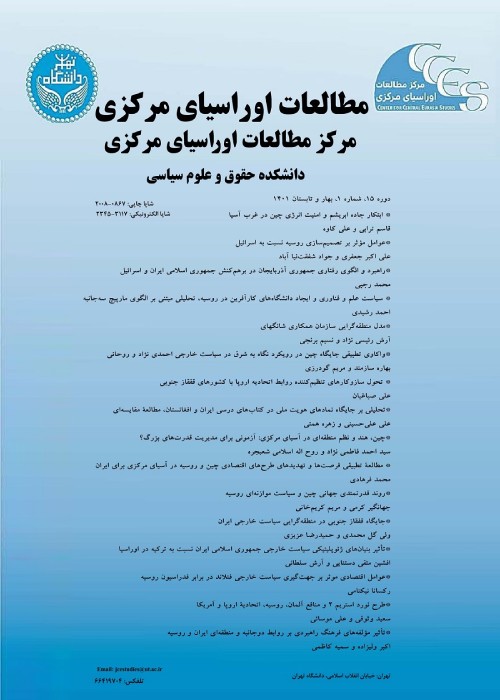The Impact of the Military-Industrial Complex on US Foreign Policy Towards Russia and China (2001 to 2020)
The 9/11 attacks US media propaganda to combat terrorism led many countries worldwide to ally with the US. In the meantime, even America's traditional rivals, Russia and China, came to terms with this. This approach, which extremist ideologies have influenced in areas such as the Chechen Autonomous Region in Russia and Xinjiang in China, has changed over time as the goals of American politicians behind their counter-terrorism policy became apparent. This behavior change was strongly influenced by the provocative and at times controversial actions of the US towards China and Russia, to the extent that even in the last days of 2014, and due to the tense activities of the US in regards to the expansion of NATO to Eastern European countries and toward the borders of Russia, led the country to define NATO as a military threat and even its number one enemy, in its new security doctrine. On the other hand, the adoption of provocative US policies toward China, especially in the last two decades, such as keeping tensions between South Korea, Japan and North Korea high in order to pressure China, has also become centerpiece of the US foreign policy During the presidencies of George Bush, Barack Obama, and Donald Trump, increasing pressure on China to limit its power has become more pronounced.
The Main Question is: what impact has the military-industrial complex had on the US foreign policy toward Russia and China.
The Hypothesis posed the question as mentioned earlier is that the flow of the military-industrial complex, using the available capacities, as well as its effective pillars, headed by military contractors, by influencing the decisions of US officials, has led to the adoption of military arms sales policies under the pretext of limiting great powers such as China and Russia. Along with the increasing trend of military contractors' incomes, it has provided the cause of discord and tension in the regions of East Asia and Eastern Europe.
Due to the fact that most researchers in the field of regional studies use the combined method in their research, this method will also be used in this research. In this method, both quantitative and qualitative methods are used. In the research process, the library method is used to collect data. In this method, two types of first-hand and second-hand sources are used; From first-hand sources, we can mention interviews, documents and news, and from second-hand sources, we can mention books, articles and strategic reports. In addition, due to the volume of research and related articles, Internet resources, including the sites of think tanks and research centers, have been used.
One of the main reasons for the US policies cited above during the last two decades is the fulfilment of the interests of the US military-industrial complex. A trend has led the country's officials to create discord and tension in many parts of the world, including East Asia and Eastern Europe. Meanwhile, the role of military contractors as one of the critical pillars of this process, which is known as to the link between other pillars of the military-industrial complex, is vital in adopting this policy. The arms industry, in the last two decades and due to the circumstances after September 11, has increased its influence, concluded heavy arms contracts and has made huge profits. At the same time, it has created military dependence in some countries in the East Asian and Eastern European regions, as well as increased tensions in these areas.
The Military contractors have constantly tried to persuade countries in the region to increase their “security” by threatening Russia and China. At the same time the escalation of tensions has benefited them and they have used widespread lobbying and even bribery to achieve the continuance of weapons purchases. Military arms companies such as Lockheed Martin and Northrop Grumman, which use their close ties to US officials and influential politicians to stabilize profitability and even increase it, often sacrifice US national security. For example, the above policy shave encouraged Russia and China, to develop advanced military weapons in order to counter American power. This has sometimes been achieved by stealing the intellectual property of advanced American weaponry and has provoked protests from US officials to the extent that it is mentioned in the 2017 US National Security Strategy as a threat to the country.
- حق عضویت دریافتی صرف حمایت از نشریات عضو و نگهداری، تکمیل و توسعه مگیران میشود.
- پرداخت حق اشتراک و دانلود مقالات اجازه بازنشر آن در سایر رسانههای چاپی و دیجیتال را به کاربر نمیدهد.


